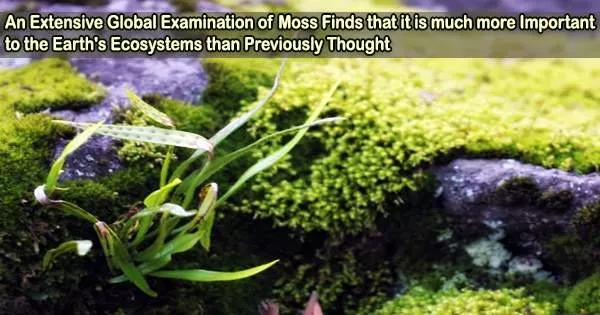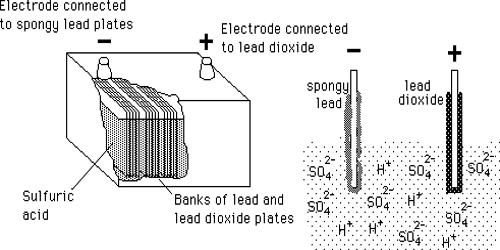Mosses are small, non-vascular plants that belong to the division Bryophyta. Mosses are some of the oldest land plants. They can be found all throughout the planet, from the harshest deserts to the windswept slopes of Antarctica and lush tropical rainforests. The most crucial place for them to grow is the soil, although they can also be found on the trunks of trees, on rocks, on buildings, and in the cracks along roads and paths.
Although they are common, we don’t really know how vital they are, especially the kinds of moss that live on soil.
They have crucial roles in maintaining life on our planet, according to new research conducted worldwide on soil mosses and published today in Nature Geoscience. Earth’s capacity to create healthy soils, offer habitat for bacteria, and fight infections would be significantly reduced in the absence of soil mosses.
A global survey of soil mosses
The results of the new study indicate we have probably underestimated just how important soil mosses are.
We demonstrate, using data from 123 sites on every continent except Antarctica, that the soil beneath mosses has higher levels of nitrogen, phosphate, and magnesium as well as higher levels of soil enzyme activity than barren surfaces without any plants.
In actuality, mosses have an impact on all significant soil activities, accelerating the decomposition of organic matter, nutrient cycling, and carbon sequestration. These processes are critical for sustaining life on Earth.
According to our calculations, soil mosses cover a sizable portion of the planet roughly 9 million square kilometers, or the size of China. Not including the mosses from boreal forests, which were left out of the study, that is.
The strength of the effect mosses have on soil depends on their growing conditions. In naturally low productivity settings, like deserts, they are most effective. Additionally, they are particularly crucial in areas with salty and sandy soils as well as extremely unpredictable rainfall.
Unsurprisingly, mosses thrive on soils with a dearth of vascular plants, which have tissues designed to transmit water and nutrients.
An intimate connection
Mosses lack the plumbing necessary for vascular plants to develop tall stems and get water from the ground. As a result, they remain relatively short and form a close bond with the top soil layers.
Mosses are extremely absorbent and can attract airborne dust particles. Some of these particles are incorporated into the soil below. It is not surprising then that they have such a strong effect on soils.
Our modeling shows that, across the globe, mosses store 6.4 gigatonnes more carbon than soils without plant cover.
Just a 15% reduction in soil moss cover globally would be equivalent to a year’s worth of world carbon dioxide emissions from deforestation and overgrazing.
Not all mosses are equal
We also found some mosses are more effective at promoting healthy soils than others. Long-living mosses have a tendency to contain more carbon and exert better control over soil pathogens.
The ability of mosses to support various communities of bacteria, fungi, and invertebrates and to offer ecosystem services was highest in areas with a high cover of mat- and turf-forming mosses, such Sphagnum, which are widespread in boreal forests.
The soil beneath mosses showed a reduced percentage of plant pathogens, despite the fact that soils constitute a vast store of soil pathogens. Mosses can help to reduce the pathogen load in soils. This ability may have originated when mosses evolved as land plants.
A special group in the desert
A special type of moss flourishes in deserts. They either live hard (perennial mosses) or die young (annual mosses).
The Pottiaceae family of mosses is particularly well-adapted to surviving in harsh environments. Many of them have unique features that enable them to persist when water is in little supply. These include leaves that resemble boats and have long, hairy points that direct water toward the center of the plant. Some mosses encircle their stem in a twisting motion to limit the surface area exposed to the sun and retain moisture.
Desert mosses also prevent soil from eroding, affect how much water percolates through the upper layers, and even change the likelihood that plant seedlings will survive.
Other mosses have special moisture-absorbing cells (papillae) that swell up and provide them with a moisture reserve when conditions are dry.
Our extensive research revealed that mosses that produce mats and turf, like sphagnum, have the greatest positive impacts on the diversity of microorganisms, fungi, and invertebrates, as well as on vital services like nitrogen provision. It should come as no surprise that longer-lived mosses supported more soil carbon and had better control over plant diseases.
Protect the mosses
Overall, our research demonstrates that mosses have an impact on significant soil processes and perform similarly to vascular plants. Even though their effects might not be as dramatic, mosses have the potential to be just as important when considered globally due to their complete coverage.
However, mosses are increasingly threatened on a global scale. The biggest dangers are disturbance from cattle, overharvesting, removing land, and even changing climates.
The benefits that soil mosses offer to all species on this planet need to be recognized more. This entails raising awareness of their advantages, identifying and reducing the primary threats they face, and incorporating them into regular monitoring procedures.
Soil mosses are everywhere, but their future is far from secure. Under the expected hotter, drier, and more unpredictable global climates, they are likely to play increasingly significant roles as vascular plants decline.
















